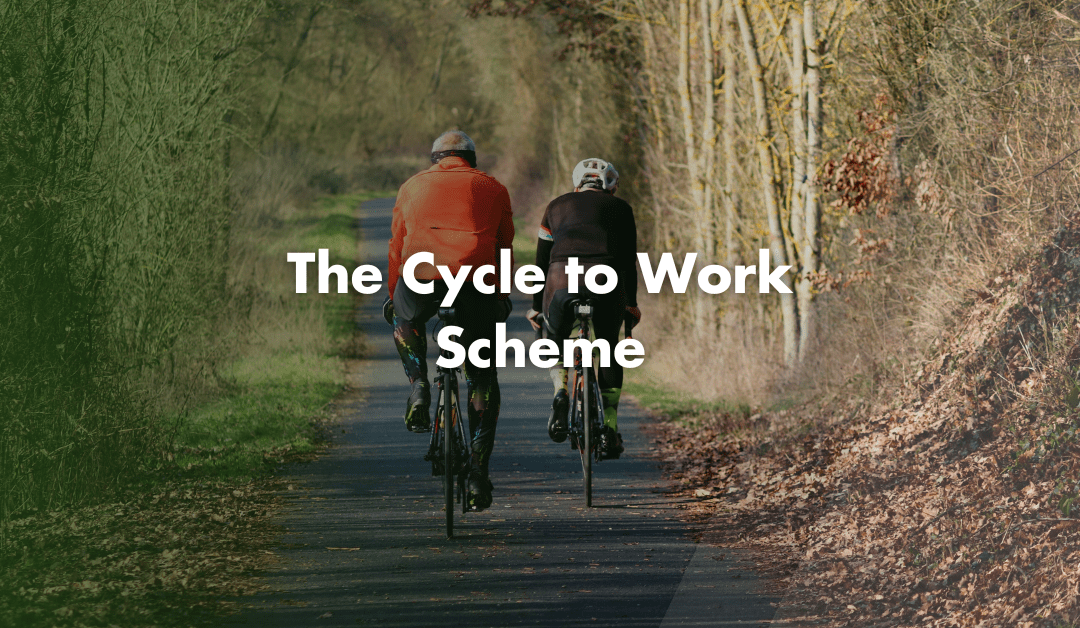The Cycle to Work Scheme is a government-backed initiative that helps employees save money on bicycles and cycling gear. It aims to promote healthier and more sustainable commuting habits while reducing traffic congestion and air pollution.
Since its introduction in 1999, over 1.6 million commuters have participated in the scheme, with over 40,000 employers across the UK offering it to their staff. It remains one of the most effective workplace benefits for encouraging active travel.
What is the Cycle to Work Scheme?
The Cycle to Work Scheme enables employees to hire a bike and necessary cycling equipment through their employer using a Salary Sacrifice arrangement. Instead of paying upfront, the cost is spread over 12 to 18 months and deducted from gross salary. Because these payments are made before tax and National Insurance deductions, employees enjoy generous savings.
At the end of the hire period, employees can choose to return the bike, extend the agreement or purchase it at its fair market value (often a small percentage of the original cost). This flexibility makes the scheme attractive for both new and experienced cyclists.
Who Can Take Part in the Cycle to Work Scheme?
The Cycle to Work Scheme is open to any employee paid through the PAYE (Pay As You Earn) system. This includes both part-time and full-time workers, provided their salary after deductions does not fall below the National Minimum Wage. Directors of limited companies can also participate if they receive a PAYE salary.
Self-employed workers and sole traders are not eligible for the scheme. However, they may still claim tax relief on bicycles used for business purposes.
Employers of all sizes can implement the scheme; whether public, private or non-profit. You can also manage this in-house or through popular providers like Cyclescheme, Halfords Cycle2Work or the Green Commute Initiative.
We do not receive any commission from mentioning or linking to these providers. They are included solely for your convenience.
What Equipment Does the Cycle to Work Scheme Cover?
The scheme offers more than just standard bikes. Eligible items include:
- Traditional bicycles
- Electronically Assisted Pedal Cycles (EAPCs)
- Tricycles and cargo bikes (where applicable)
Essential cycling accessories are also covered, such as:
- Helmets
- Bike locks
- Lights
- Mudguards
- Reflective clothing
Items aimed at performance or leisure, such as GPS devices or power meters, are excluded.
While there was once a £1,000 spending cap, many providers are now authorised by the Financial Conduct Authority (FCA), allowing employers to set higher or unlimited limits. This therefore makes premium and electric bikes more accessible.
Benefits for Everyone
Employees
- Save between 32% and 47% depending on your tax bracket
- Avoid upfront costs with affordable monthly payments
- Improve physical fitness and mental wellbeing
- Reduce everyday commuting expenses
Employers
- Save 13.8% on Employers’ National Insurance Contributions per participant
- Promote healthier lifestyles and reduce employee adsenteeism
- Enhance staff satisfaction and retention
- Strengthen your organisation’s green credentials
Environmental and Public Health
- Reduce carbon emissions and reliance on private vehicles
- Improve urban air quality
- Ease congestion during peak travel times
- Support public health initiatives and reduce NHS strain
Example Savings Breakdown
Consider – A basic-rate taxpayer earning £25,000 per year who choose a bike and accessories worth £1,000. Through Salary Sacrifice, the net cost reduces to approximately £680. A higher-rate taxpayer could pay approximately £580
For example – A £1,000 package over 12 months results in payments of approximately £56.67 per month for basic-rate taxpayers. This is even less for higher-rate earners.
Employers benefit too – For every £1,000 sacrificed, they save approximately £138 in National Insurance Contributions. This adds up quickly with wider staff participation.
What Happens After the Hire Period?
At the end of the agreement, employees usually have three options:
1. Return the bike to the scheme provider or employer
2. Extend the hire agreement with a small deposit
3. Purchase the bike at its fair market value
HMRC provides guidance on how to assess the bike’s market value. For instance, a one year old bike originally costing over £500 typically has a resale value of 25%. This drops to around 7% after four years, and may reach zero after six years.
Most users opt to buy the bike at the end, continuing to enjoy its benefits long after the hire period.
Pre-Enrolment Considerations
Before enrolling, keep the following points in mind:
- At least 50% of the bike’s use must be for commuting or work-related travel
- Salary Sacrifices must not reduce earnings below the National Minimum Wage
- You may need to pay the outstanding balance if you leave your job during the agreement
- You are responsible for the bike during the hire period so consider insurance
Additionally, reducing your gross salary may affect other benefits, such as pension contributions or statutory pay. You should consult with your HR or payroll department to understand the full implications.
Contact Us
We are not just accountants; we are Chartered Accountants with one of the most reputable and premium accounting bodies. We are registered and regulated by ACCA; so you can rest assured that you are in good hands. Knowing this, don’t hesitate to get in touch with us if you require assistance: Pi Accountancy | Contact Us

